In confrontation with America, the Chinese will help their own counterweight strategy
Industrial and technical espionage and civil-military cooperation
The main goal of the Chinese counterweight strategy was to catch up with the United States in the technology race as quickly as possible. This formed the basis of all Chinese activities in this race - industrial and technical espionage.
As stated in a recent report on China's industrial espionage, this direction of the Chinese counterbalance strategy is "a conscious effort with government support aimed at reducing research costs, overcoming cultural lag and moving to higher technological levels through the use of other peoples' creative abilities." High-ranking officials in the US government recently reported that the Chinese opened a network of the American defense company and received secret data on the means of conducting underwater military operations of the American fleet. This is one of the latest examples of one of the most widespread, successful and audacious industrial and technological espionage programs in stories.
This espionage activity is almost entirely dependent on the process defined in Chinese documents by the term “civil-military merger” (deep integration of the civilian and military sectors of industry), whereby Chinese officials work to simplify the legal and illegal transfer of technology for military needs by scientific and commercial interaction with the United States and other technologically advanced countries of the West. According to a statement by the US Department of State, since 2009, this activity has been stepped up and at the moment "a unified national level strategy has been developed to completely" merge "the Chinese military and civilian industrial complexes."
Chinese leaders openly voice the goals of this activity. With regard to the Chinese civil-military merger, the Department of State recently officially announced: “The determining factor in the launch of this grand process was the sharp realization by the Chinese that the complete enslavement of their country in the 19 century was the result of military-economic backwardness, including in technological and doctrinal terms, which didn’t allow to take advantage of the so-called “military revolutions” that dominated and determined military operations throughout the 20 century ... China is determined and not let the backlog in the next revolution in the military sphere, which, according to Chinese officials are already taking place. "
In other words, the Chinese leadership views industrial and technical espionage and civil-military mergers as the main drivers of a jump start in Chinese technological progress without investing in costly research and development of new technologies. Studies have shown that the transition from prototype to deployment of a finished system takes approximately the same time in both China and the United States. However, in the case of similar systems, industrial and technical espionage has helped the Chinese military to reduce time and costs in the transition from concept to research and development of prototypes. As a result, illicit technology transfers, reverse engineering, and civil-military mergers have allowed the Chinese to deploy advanced technical capabilities at a much faster rate than US intelligence agencies had originally expected. And therefore, it is hardly a mere coincidence that, structurally, the latest front-line fighters of the Chinese army very much resemble the American F-22 Raptor or F-35 Lightning II fighters, or that some of its drones are an exact copy drones Predators and Reapers. As a result, through the theft and use of American and Western technical secrets, they have been able to level the technological playing field with the US military in some key military capabilities in less than two decades, which is an instant by the standards of long-term peacetime strategic rivalry.
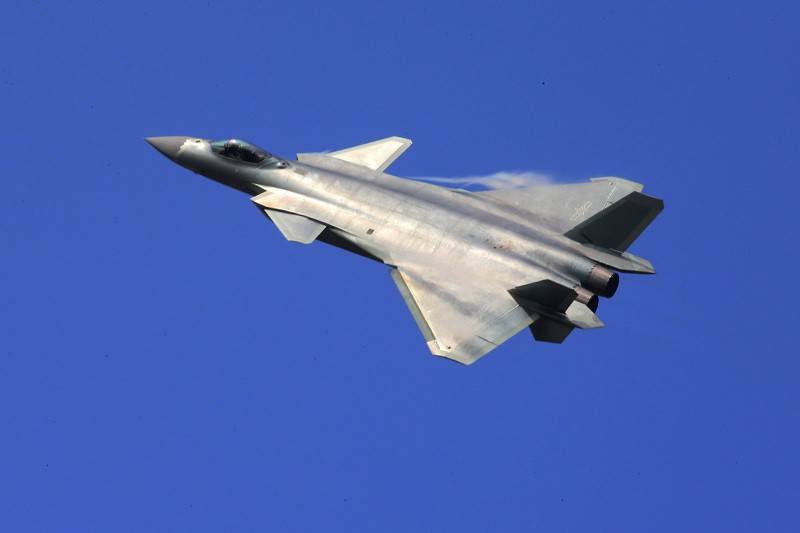
Destruction military operations
The second line of activity in the Chinese counterbalance strategy allows us to direct the activity of the Chinese in the field of espionage to solve certain problems and helps to determine the priorities of the Chinese army in investments. This is stated in the concept of the Chinese army for high-tech military operations. There, "traditional" modern military operations are described as linear, with clear front lines. In the same way, the Soviet Union planned to conduct its operations against NATO, attacking and trying to break through and strike into the enemy's rear rear areas. But in high-tech warfare, attacks are not limited to geographic boundaries; combat operations are conducted simultaneously in space, on water, on earth, in the air, cyberspace and in an electromagnetic field. In this multi-media warfare, military operations are less like a battle to annihilate each other's opposing military forces and more like a battle of opposing "control systems", which Chinese strategists call "confrontation of systems." And the "military destruction of systems" reflects the theory of the victory of the Chinese army over such a high-tech opponent, such as the United States.
American control systems or combat networks have four interconnected arrays. A multi-media multi-sensor array monitors the fighting space from the seabed to outer space; an array of operational management, communication and information collection (C3I) “comprehends” the observation results and data received from the sensor array, determines the actions necessary to achieve the further goals of this campaign, develops and selects a sequence of actions, and sends orders to the impact array, which uses kinetic and non-kinetic agents as directed from the C3I array. The fourth support and recovery array supports all three of the aforementioned arrays and supports their operation during combat operations. Working together, the sensor arrays, C3I and impacts make up the “chain of defeat” for a given theater of operations with the aim of finding, capturing and neutralizing intended targets. As the Chinese army’s planning structures could observe during Operation Desert Storm and once again in the skies over Serbia and Kosovo, the US military is assembling its various expeditionary combat networks and executive components in the area of operations and linking them through advanced and broadband communications and architecture systems data with impact elements and logistics components collected at nearby bases. To make this concept as efficient and economical as possible, US forces are concentrating elements of their combat networks. Such a centralized structure, although quite effective, consisted of many vulnerable single points, each of which China aimed with its advanced capabilities.
The Chinese realized that in order to have at least some hope of coping with the American invasion, especially at a time when the Chinese army was technologically behind without a doubt, they would need to paralyze the work of the American combat network. This is the main goal of military operations to destroy systems - to disable the operational system, command system, weapon system, enemy support system, etc., as well as internal communications within each of these systems. The destruction of these ties leads to the fact that the enemy, instead of coordinated military operations, begins to conduct separate, fragmented operations, thereby worsening their general combat capabilities.
In the event that this extermination campaign can have a strategic impact on the American combat network, the Chinese can count on achieving information superiority, which they consider “the most important operational method of modern wars” and the main prerequisite for achieving dominance and superiority “in the air at sea and on land. " This key and indispensable condition is so important that Chinese military theorists add a fifth network to their model of operational networks - the information warfare network. The purpose of this network, which is consistent with the general theory of war on the destruction of systems, is to achieve and maintain the information superiority of its operational system while searching for ways to degrade or destroy the enemy’s operational combat system on the battlefield. Information confrontation system consists of two main subsystems: information attacking system and information defense system.
Due to its central position in the strategic thinking of the Chinese army, the war on systemic destruction became a dominant impulse along with decisions on the restructuring of the Chinese Armed Forces and modernization priorities. This explains the large Chinese investments in countering the capabilities of the combat network and the means of conducting an “information war” - the use of electronic warfare, cyber attacks, attacks on computer networks, information operations and misrepresentation in order to destroy the integrity of any American combat network. For example, the Chinese have developed some type of electronic warfare in order to threaten every American system and data channel; can be assumed. that they also developed cyber attack tools. Based on the US reliance on space support for its expeditionary combat networks, the Chinese army focused on the space company in order to “blind and defeat the enemy” as part of the main military actions to destroy systems. This helps explain China’s large investments in some anti-space weapons, including direct launch rockets, weapon directed energy and orbital weapons. The emphasis on the war on the destruction of systems also helps to understand the reasons behind the creation of the new Strategic Support Force in the Chinese army - the fundamental structure that is tasked with more deeply integrating the capabilities of warfare in outer space, in cyberspace and electronic warfare in the operations of the Chinese army.
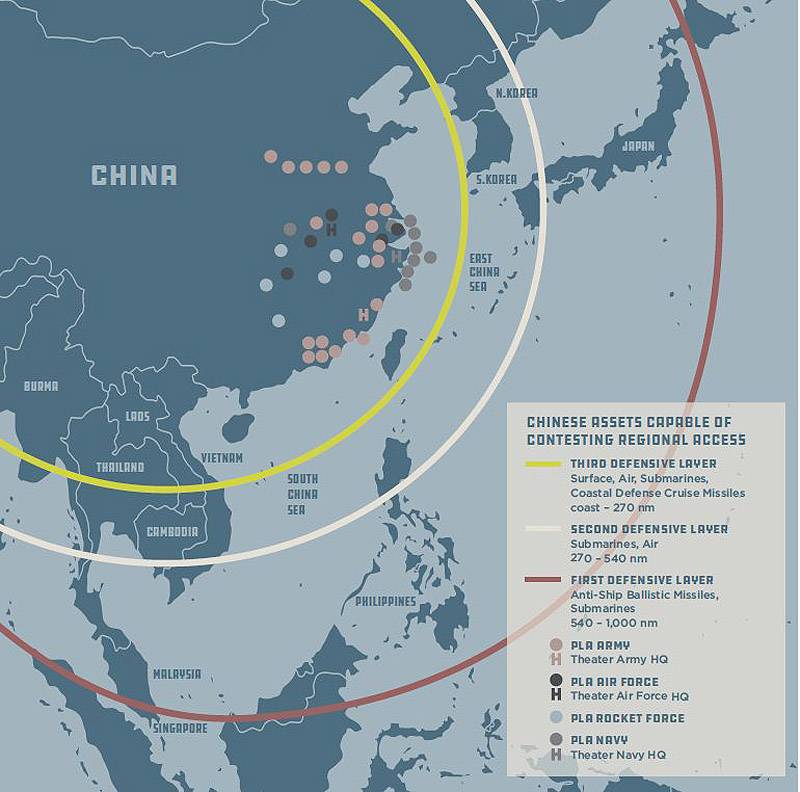
Attack first
The Chinese believe that the main operational approach in the confrontation of systems should be long-range high-precision strikes with guided ammunition from various environments, which will deprive the enemy of the ability to create a balanced defense. The third area of activity of the Chinese counterweight strategy includes the development of doctrine, systems, platforms and weapons so that the Chinese army can effectively attack any opponent first. “Attacking effectively (with the most concentrated means) and doing it first (due to longer range weapons, advantage in maneuvering, or coordinated actions based on well-conducted reconnaissance)” is the cornerstone of Chinese military thought and guided weapons-led military operations. And this is the second dominant impulse along with the decisions of the Chinese army on restructuring forces and the priorities of modernization.
The general emphasis on an effective advance attack explains the obsession of the Chinese army, which seeks to possess weapons that “outplay” its opponents — that is, has a long range. If we assume that the two opposing forces have equal reconnaissance capabilities, then a side with a longer range weapon should be able to focus its fire more often on the units of the other side and thereby have a stronger effect on it. And if one of the parties gains an advantage in intelligence, then this impact will be even more powerful.
Therefore, there is nothing surprising in the fact that the Chinese counterweight strategy focuses on weapons, which in general have a greater effective range than its American counterparts. For example, a standard American Harpoon anti-ship missile has a maximum range of about 75 nautical miles. Its Chinese counterpart, the YJ-18 rocket, can hit targets at ranges of up to 290 nautical miles, which is almost four times more. And if the Chinese army cannot surpass American weapons in range, then it seeks to achieve at least parity here. In a duel of guided munitions, she expects equal rivalry, with which the Americans can not agree. As a result, the situation is currently developing very dynamically. Battle aviation The United States has long had an advantage in range in air combat, armed with an AMRAAM (Advanced Medium Range Air-to-Air Missile) missile with a range of 100 nautical miles. However, at present, the new Chinese air-to-air missile PL-15 has caught up with the American range. Even this is enough to get the U.S. Air Force combat pilots nervous. who were raised with confidence that they could safely launch rockets at the enemy without fear of a return launch. And now they are demanding a rocket that "would surpass the PL-15."
The Chinese emphasis on effective advanced attack also explains why the Chinese army chose what the term "missile strike strategy" got, which is based on long-range ballistic and cruise missiles, as opposed to air-based weapons from the concept of American long-range strike. The Chinese have carefully taught the United States to use aviation in Operation Desert Storm and in Bosnia and Kosovo. As a result, the Chinese chose for themselves not the creation of symmetrical, first-class air forces, but the creation of first-class missile forces with an emphasis on mobile ballistic missile systems launched from transport launchers. From China's point of view, such an approach to creating a structure has a rationale:
- Ballistic missile units are less expensive to organize, prepare and operate than first-class air forces - the main American long-range strike mechanism.
- The adoption of ballistic missiles is based on the so-called competitive asymmetry. Until recently, the United States was bound by the Intermediate-Range Missile Treaty, which limited the range of ground-based missiles to five hundred kilometers. By never being a party to this treaty, China was able to develop and deploy a large number of ground-based missiles without any range imposed on itself.
- In a competition to increase the range, as a rule, it is easier to increase the range of the rocket due to the manufacture of a larger body that can take more fuel than to increase (without using refueling) the flight range of manned aircraft.
- It’s easier and faster to organize massive missile attacks than air strikes, the preparation for which is also much more noticeable, which is the basis of the Chinese doctrine of effective preemptive fire.
- Mobile ballistic missile launchers are much more difficult to find and destroy, unlike large stationary air bases, which are necessary to ensure long-term air operations.
China's commitment to its missile strike strategy was also confirmed at the end of the 2015 year, when missile forces were formed - the fourth type of troops in the Chinese army, equal in army, navy and air force status. The PLA missile forces were formed from the 2-th artillery corps, which since 1985 year was responsible for ground defense against intercontinental nuclear missiles. It is important that the created missile forces are responsible for delivering nuclear and conventional attacks on land and sea targets at medium distances in the zones of vital interests of China. The missile program of the Chinese army is considered the most active in the world; within its framework, several types of cruise and ballistic missiles of any army are currently being developed, which in their capabilities are not inferior to the most advanced systems of any army in the world. In addition, the missile forces tirelessly improve their combat skills. According to a former commander of US forces in the Pacific, China launches over 100 missiles per year for training and research purposes.
The emphasis on the use of ballistic missiles in delivering an effective preemptive strike is also reinforced by another consideration. When using uncontrolled means, most of which are expected to miss for their goals, it is necessary to rely on massive volleys in order to guarantee even a single hit. On the contrary, when using controlled systems, it is necessary to shoot only enough to saturate the enemy defense; any single missile that breaks through the air defense line is very likely to hit the target. Thus, the defense against any attacks of guided munitions imposes a very great responsibility on the defense, and it becomes even greater when defending against weapons that are specially designed to break through the defense or which are difficult to bring down by nature. Generally speaking, air defense experts believe that ballistic missiles are harder to hit than airplanes and cruise missiles. This is especially true in the case of advanced options with multiple maneuvering warheads, false targets and jammers.
The Chinese are focusing on weapons that are capable of breaking through the US defense lines with high probability, expanding their arsenals not only with ballistic missiles, but also with supersonic missiles of all types. This explains China’s purchases of Russian weapons, for example, the supersonic Mosquitoes (SS-N-22 Sunburn) and the more advanced Caliber anti-ship cruise missiles (SS-N-27B Sizzler), both of which were specially designed to break through the latest Aegis combat system American Navy. These Soviet-era missiles were already followed by the actual Chinese supersonic anti-ship long-range cruise missile YJ-12 in versions of air and ship launch. These supersonic missiles and other systems of this type are more difficult to intercept, because they integrate elements that increase their chances of breaking through the defenses on the final segment of the trajectory, for example, active maneuvering in flight and advanced homing heads of the millimeter range that American electronic suppression systems cannot fool. Supersonic anti-ship missiles are used in combination with the world's first Chinese-developed DF-21D anti-ship ballistic missile, nicknamed the “Aircraft Carrier Killer”, which has a range of almost 1000 miles and a maneuvering warhead. An even larger range DF-26 will soon join this ballistic missile, capable of reaching the American base on Guam and threatening American aircraft carriers located between the first and second island chains.
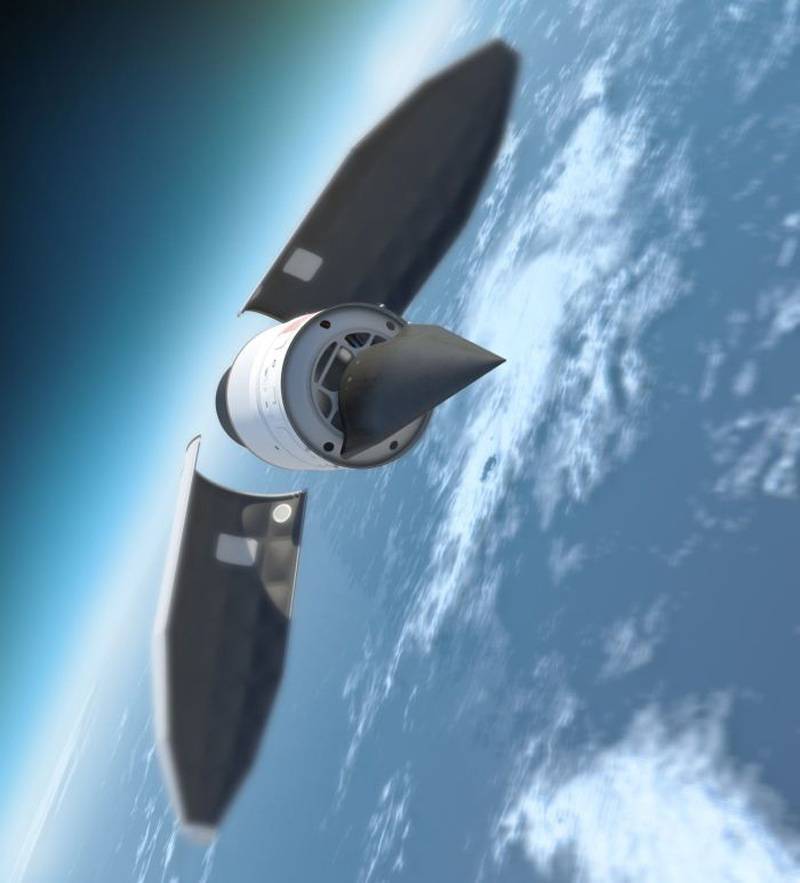
Deputy Defense Minister for R&D Mike Grifin announced at the beginning of the 2018 in Congress that the Chinese are adding hypersonic and hypersonic gliding devices to their already impressive arsenal of ballistic and cruise missiles. Hypersonic weapons fly through "near space", not very well covered by current American sensors or actuators. In addition, they can maneuver at speeds more than five times the speed of sound and in the last section of the trajectory make a sharp dive from different heights. All these characteristics make hypersonic weapons a very difficult target for American combat networks.
Possession of weapons that exceed the range of the opponent’s weapons and have good chances to break through his defenses, provides a potentially winning position in high-tech combat operations, characterized by intense duels of guided weapons. Such attacks are especially attractive in the fight against a technologically more advanced rival, such as the United States. Therefore, sudden strikes play a major role in the doctrine of the Chinese army. And whether it is a preventive first strike or successive strikes, Chinese military doctrine always preaches powerful, concentrated strikes. Chinese officers harshly criticized Iraq after Operation Desert Storm for firing "Scud missiles like pepper from a pepper shaker." On the contrary, they point to the need for "concentrated use of advanced weapons to conduct focused, super-intense, unexpected attacks in a limited space-time volume" and for such key goals as, for example, command centers, communication centers and information processing centers. Indeed, military actions to destroy systems and an effective advance attack in the Chinese counterweight strategy, in fact, are considered as two sides of the same coin.
Given the US leadership in guided warfare operations at the end of the 90's, the initial emphasis on a war to destroy (destroy) systems made obvious sense from a Chinese point of view. If successful, this war would not allow the American combat network to effectively use its advantages in high-precision long-range strike. However, the Chinese have always sought to defeat the Americans in a massive strike with guided weapons. Accordingly, despite the fact that the emphasis is on the destruction of the military networks of the United States in order to achieve decisive information superiority, the Chinese army hopes to defeat the opponent by blows with guided weapons. In fact, these two approaches mutually reinforce each other, since high-precision attacks on key targets of American combat networks only accelerate their destruction.
The Chinese missile strategy has a negative impact on the US military and in peacetime. First, an effective “financial load” strategy forces the United States to develop and deploy extremely expensive missile defense systems to protect its military bases, both land and sea. Secondly, it forces the US military to think in a “too defensive” manner, focusing on protecting advanced forces and assets from Chinese guided weapons, rather than adhering to a more aggressive way of thinking, in which the emphasis is mainly on using the enemy’s available vulnerabilities.
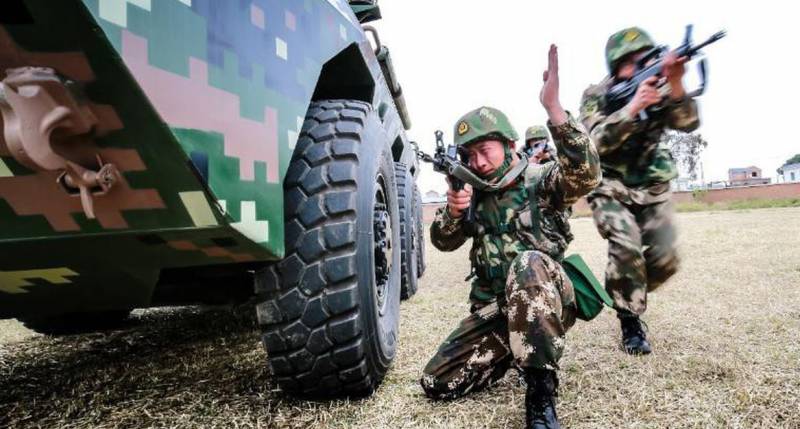
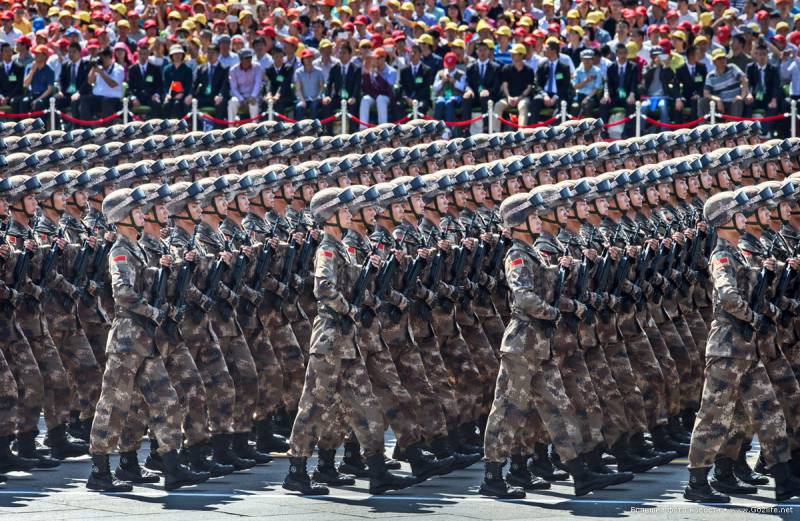

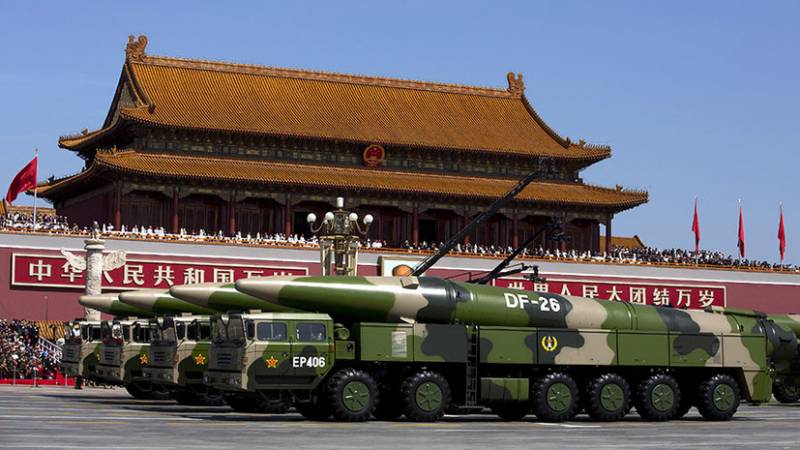
Information